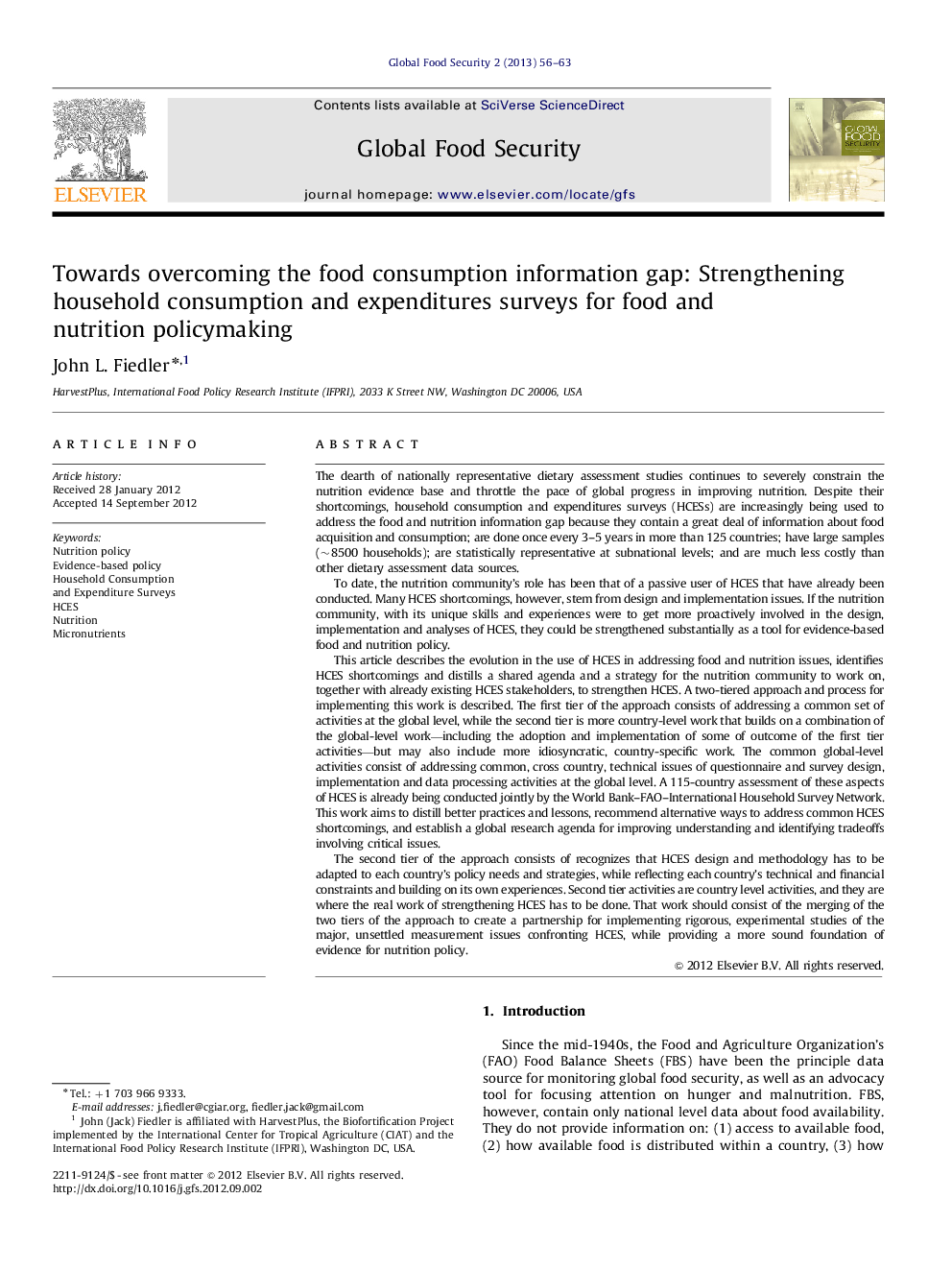| کد مقاله | کد نشریه | سال انتشار | مقاله انگلیسی | نسخه تمام متن |
|---|---|---|---|---|
| 1047581 | 945293 | 2013 | 8 صفحه PDF | دانلود رایگان |
The dearth of nationally representative dietary assessment studies continues to severely constrain the nutrition evidence base and throttle the pace of global progress in improving nutrition. Despite their shortcomings, household consumption and expenditures surveys (HCESs) are increasingly being used to address the food and nutrition information gap because they contain a great deal of information about food acquisition and consumption; are done once every 3–5 years in more than 125 countries; have large samples (∼8500 households); are statistically representative at subnational levels; and are much less costly than other dietary assessment data sources.To date, the nutrition community's role has been that of a passive user of HCES that have already been conducted. Many HCES shortcomings, however, stem from design and implementation issues. If the nutrition community, with its unique skills and experiences were to get more proactively involved in the design, implementation and analyses of HCES, they could be strengthened substantially as a tool for evidence-based food and nutrition policy.This article describes the evolution in the use of HCES in addressing food and nutrition issues, identifies HCES shortcomings and distills a shared agenda and a strategy for the nutrition community to work on, together with already existing HCES stakeholders, to strengthen HCES. A two-tiered approach and process for implementing this work is described. The first tier of the approach consists of addressing a common set of activities at the global level, while the second tier is more country-level work that builds on a combination of the global-level work—including the adoption and implementation of some of outcome of the first tier activities—but may also include more idiosyncratic, country-specific work. The common global-level activities consist of addressing common, cross country, technical issues of questionnaire and survey design, implementation and data processing activities at the global level. A 115-country assessment of these aspects of HCES is already being conducted jointly by the World Bank–FAO–International Household Survey Network. This work aims to distill better practices and lessons, recommend alternative ways to address common HCES shortcomings, and establish a global research agenda for improving understanding and identifying tradeoffs involving critical issues.The second tier of the approach consists of recognizes that HCES design and methodology has to be adapted to each country's policy needs and strategies, while reflecting each country's technical and financial constraints and building on its own experiences. Second tier activities are country level activities, and they are where the real work of strengthening HCES has to be done. That work should consist of the merging of the two tiers of the approach to create a partnership for implementing rigorous, experimental studies of the major, unsettled measurement issues confronting HCES, while providing a more sound foundation of evidence for nutrition policy.
► Household consumption and expenditures surveys (HCESs) are increasingly used in nutrition analysis.
► We describe the appealing characteristics of HCES that have contributed to this trend.
► We identify HCES shortcomings for nutrition analysis.
► We distill a shared agenda and strategy for the nutrition community to work with existing HCES stakeholders to strengthen HCES.
Journal: Global Food Security - Volume 2, Issue 1, March 2013, Pages 56–63
